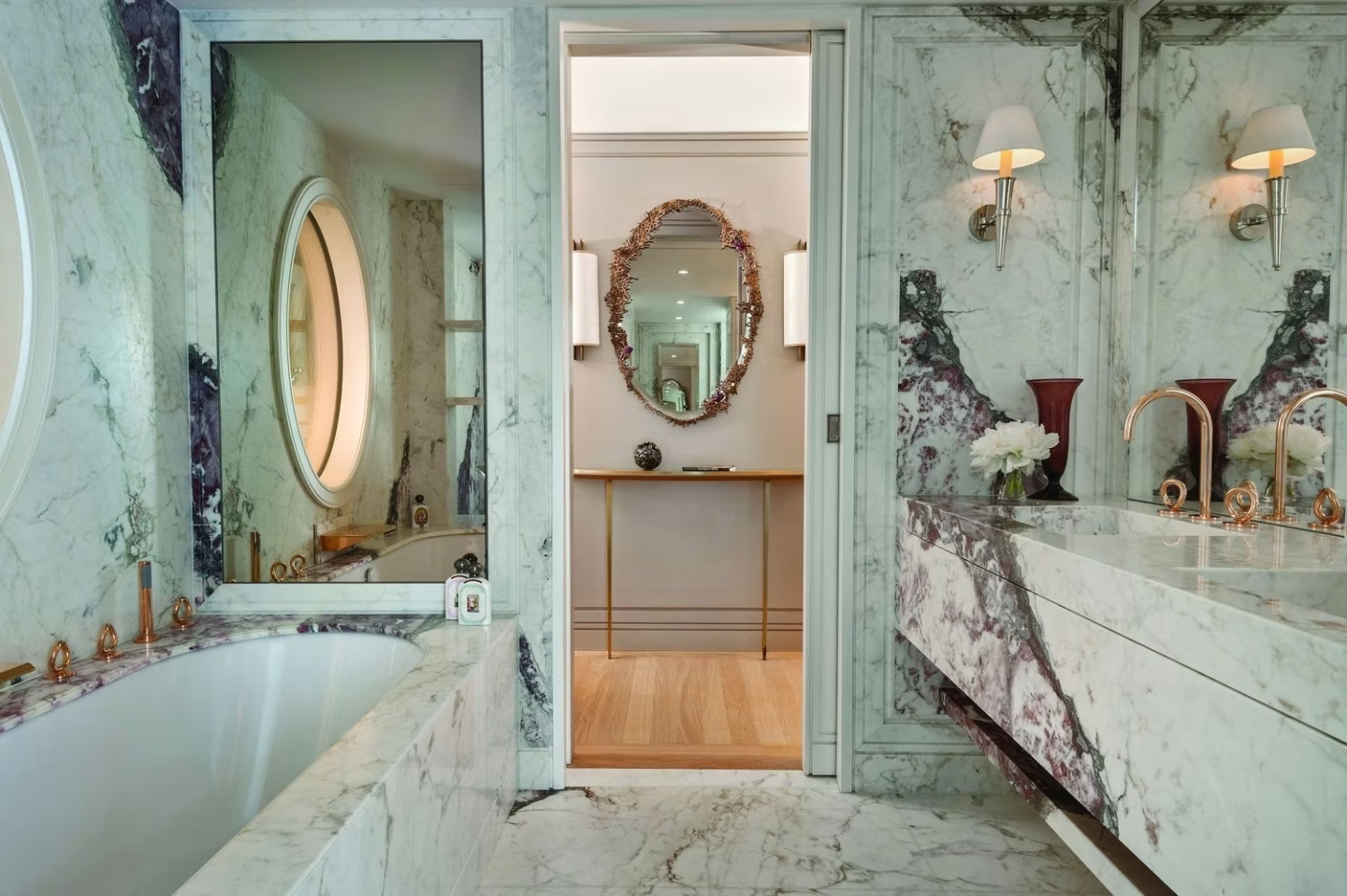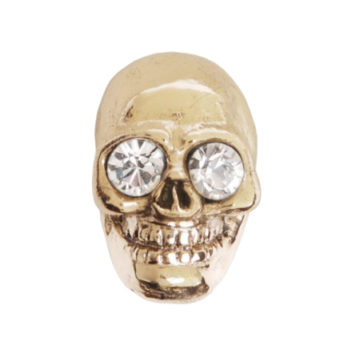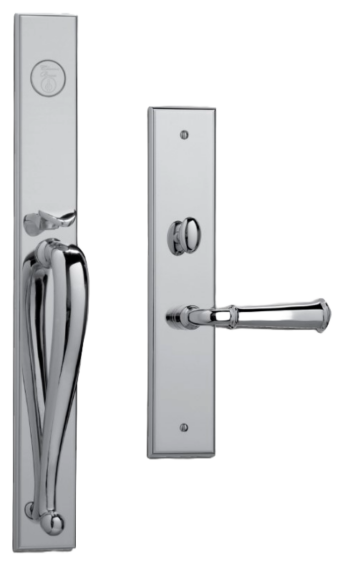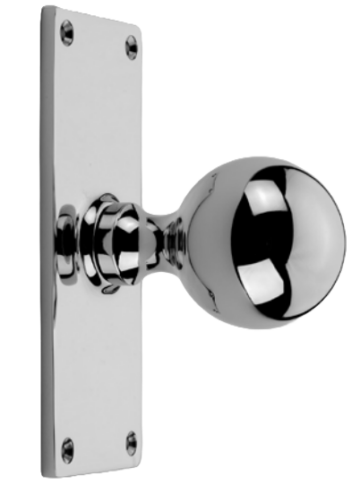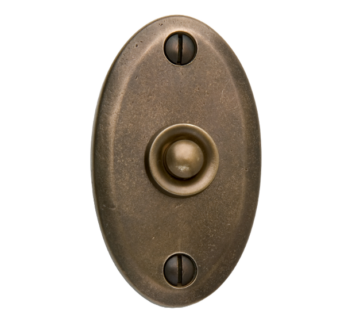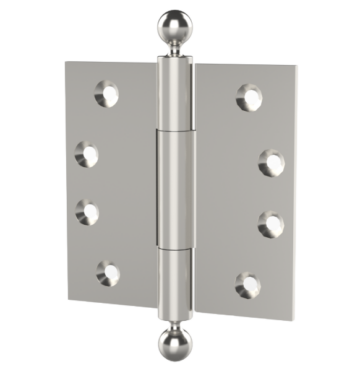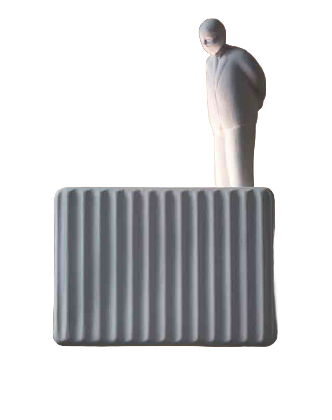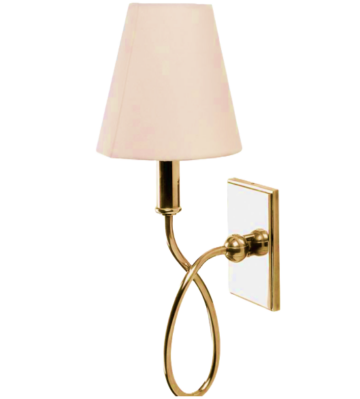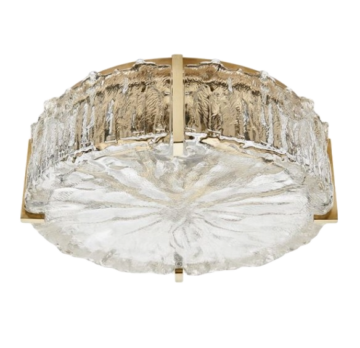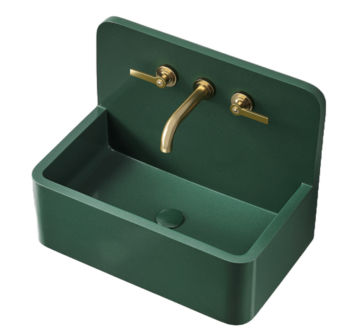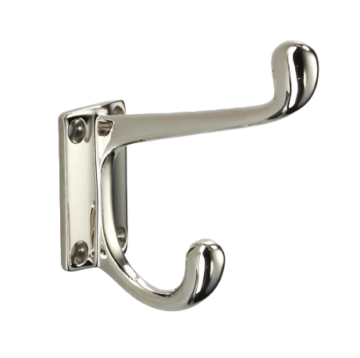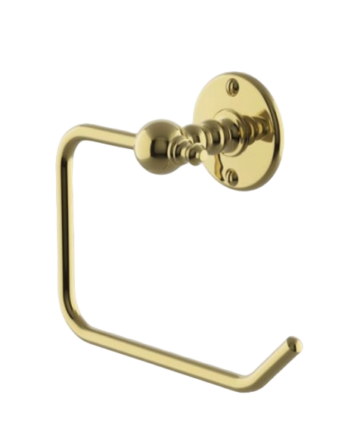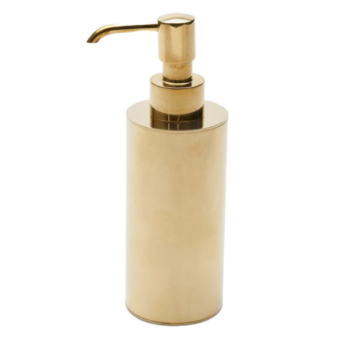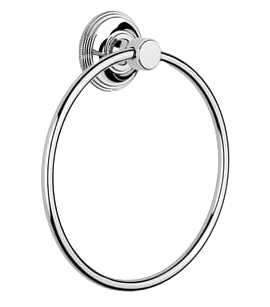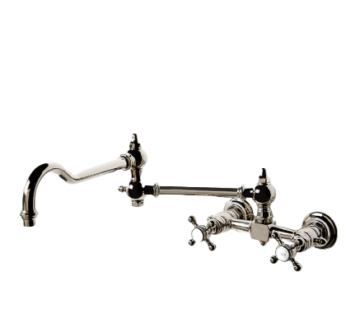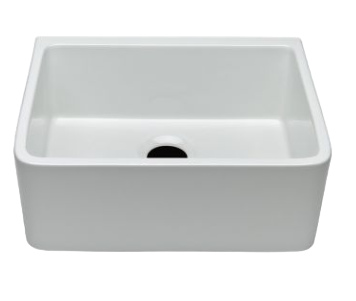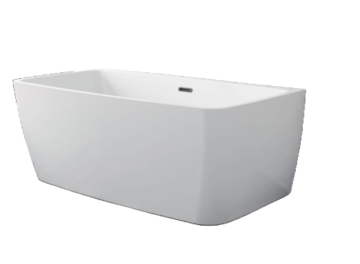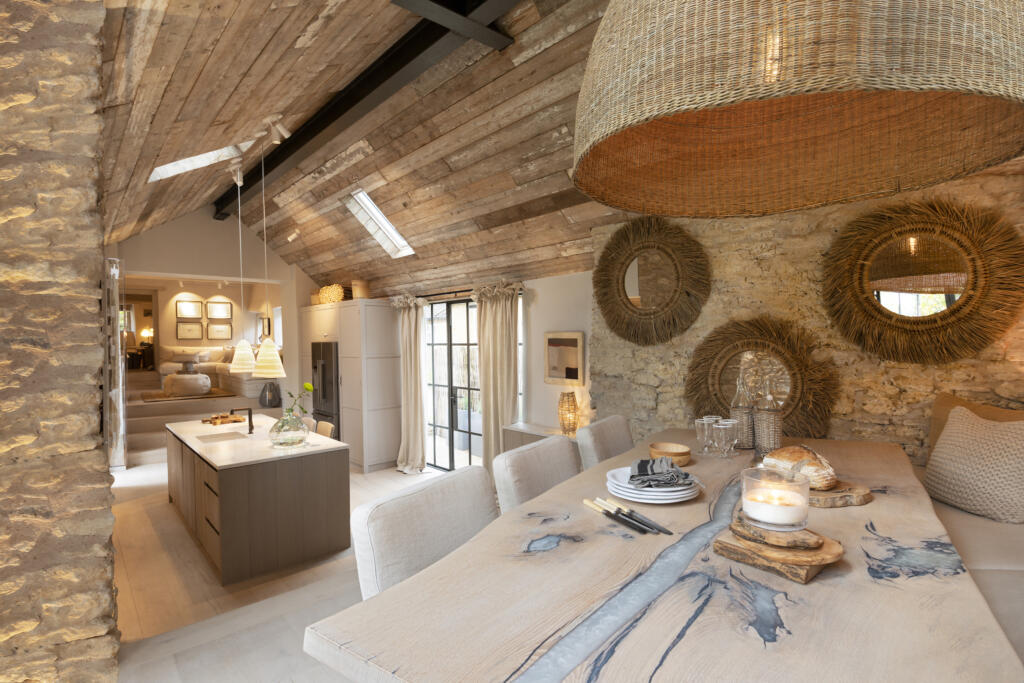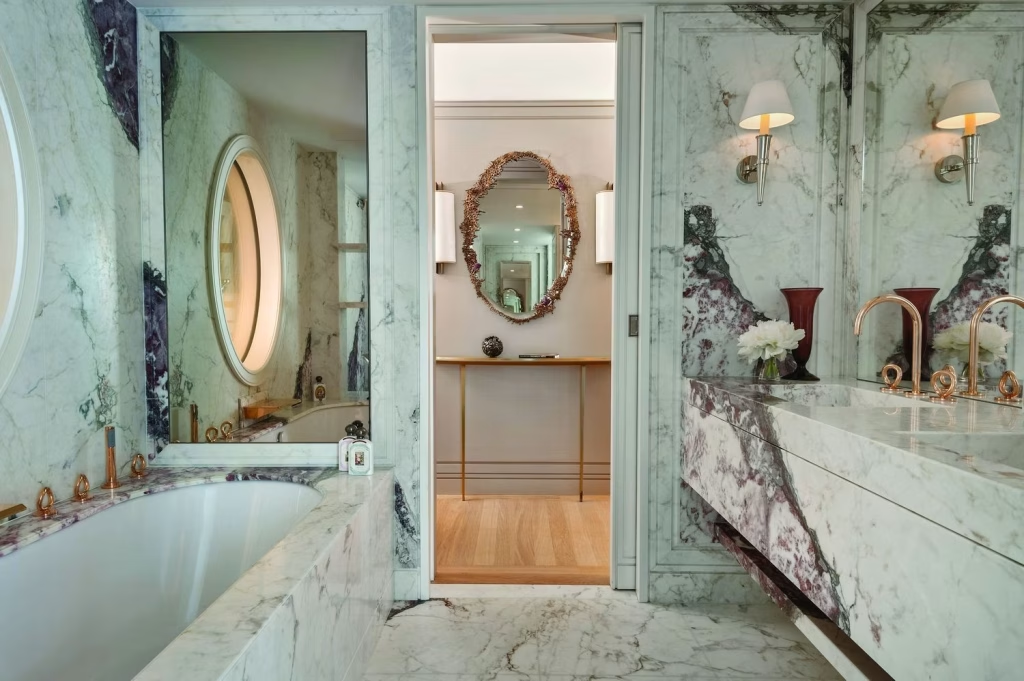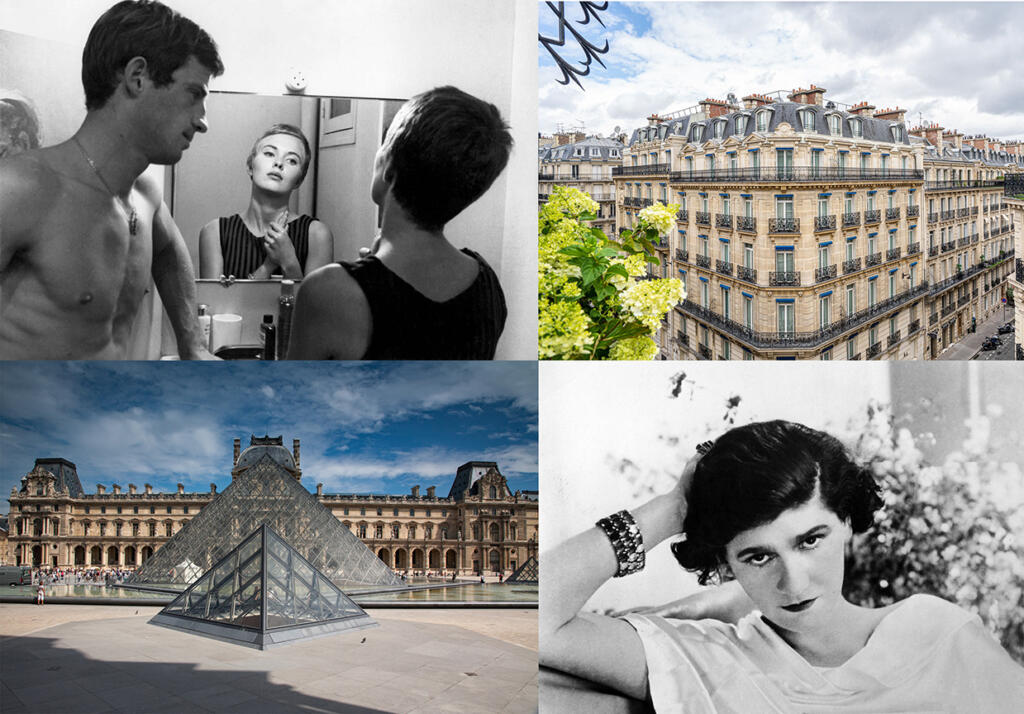
Evidenced by everything from the Gothic grandeur of Notre-Dame to the playful spirit of Rococo and the bespoke intricacies of haute couture, French design is a vast arena that simply can’t be placed in a nutshell. Even the effortless chic style of French people elicits the elusive je ne sais quoi. On full display in the films of Nouvelle Vague auteur Jean-Luc Godard, that seemingly innate cool factor extends beyond French people — it’s an attitude, an indefinable vibe that can be applied to art, fashion, decor, almost anything imaginable.
Although there are multitudes in between, a compendium of French design might contrast the ornate, gilded flourishes of the Baroque and Rococo movements of the 1700s with the streamlined, geometric elegance of Art Nouveau and Art Deco in the 1900s. That compendium might also credit controversial urban planner Baron Haussmann with “transforming” Paris into a modern city distinguished by grand boulevards, stately apartment buildings and lush gardens.
Icons of Parisian aesthetics, the buildings Haussmann designed in the mid-19th century were intentionally uniform — all built from cream-colored limestone and topped with mansard roofs — as part of plan to “unify” the evolving City of Lights. But France is also a grand champion of mixing styles and juxtaposing old and new. Beaux-Arts architecture — an 1830s-era mashup that put a modern spin on Neoclassical and Baroque styles — is one famous example. The ultra-modern glass pyramid I. M. Pei plopped amid the classical confines of the Louvre courtyard is another.
Fittingly, the distinctive French brands represented by Alexander Marchant — Rémy Garnier, Bronzes de France, THG Paris, and the enigmatic niche line Serie Rare — uphold rich and historic traditions while also embracing innovation and stylistic evolution.
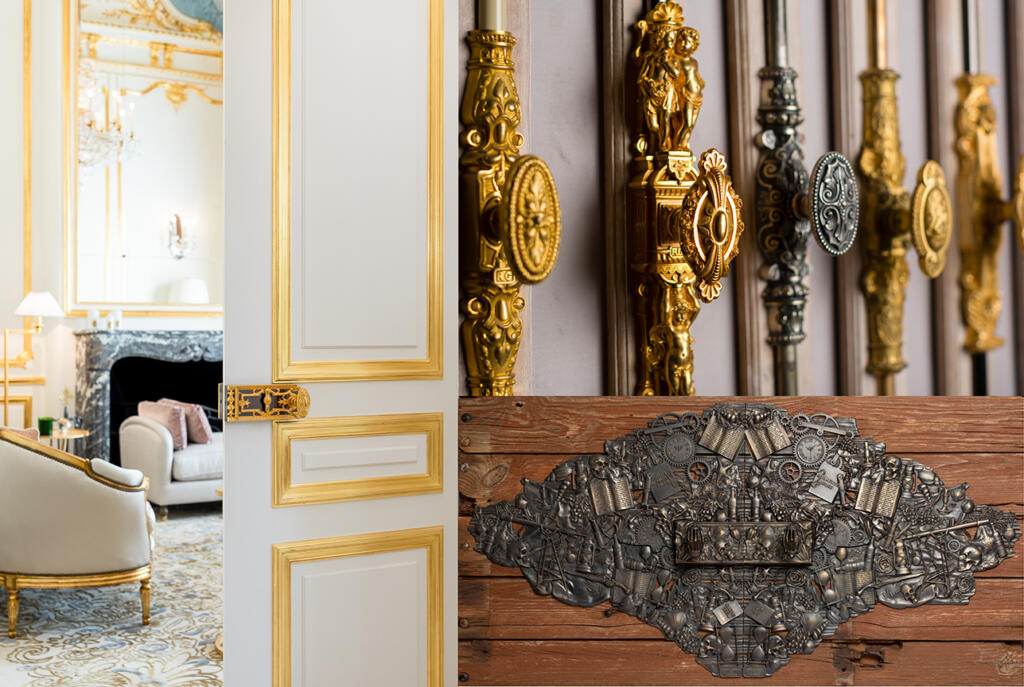
Rémy Garnier
Entrepreneurial metalworker Rémy Garnier established his namesake workshop on Paris’ left bank in 1832, focusing chiefly on locks and door hardware. Credited as the inventor of the cremone bolt — a ubiquitous locking mechanism for windows and doors — Garnier hit an early career milestone when he got tapped to restore the locks of Paris’ city hall after the 1871 Commune Fire. That high-profile project positioned Garnier neatly with Baron Haussmann’s revitalization efforts and the construction of his quintessentially Parisian apartment buildings — which all called for cremone bolts. Nearly two centuries since its inception, Rémy Garnier now boasts a catalog comprising 7,000 unique bronze and brass designs — sleek Art Deco levers and ornate Louis XIV knobs among them. Anchored by an immense Paris workshop on Boulevard de la Bastille and a bronze foundry in Touraine, the company is a go-to for historic preservation projects and has restored locks, cremones and light fixtures at the Louvre, Versailles, the Élysée Palace, the Swiss Embassy and the Paris Opera, among many other landmarks and monuments. As a result, Rémy Garnier has earned the designation of Entreprise du Patrimoine Vivant, which recognizes significant contributions to national heritage through craftsmanship. While the Art Nouveau and Art Deco movements remain touchstones, Rémy Garnier marches onward with forward-thinking offerings that encompass both custom orders and new creations such as Vanities — a monumental lock inspired by biker culture and the fleeting nature of life itself.
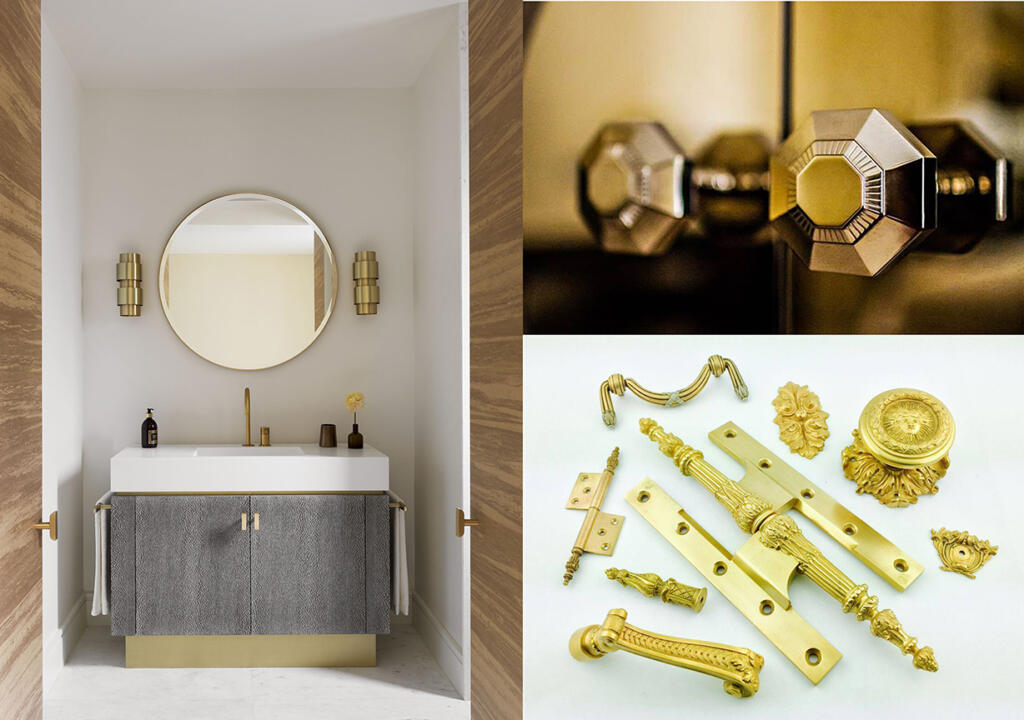
Bronzes de France
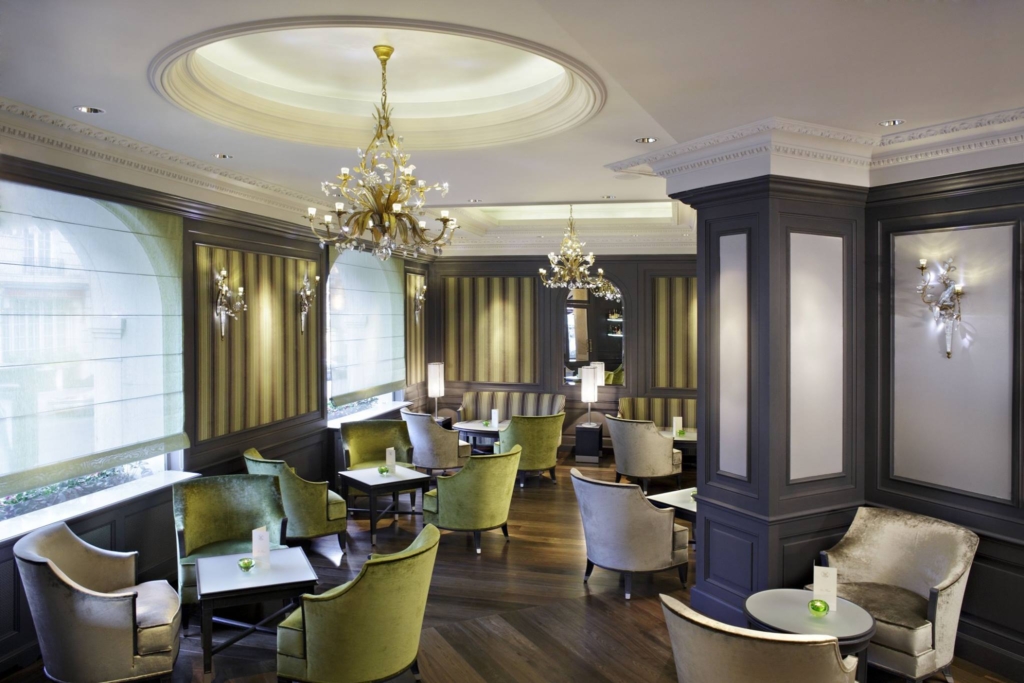
A leader in the realm of artistic bronze hardware since 1852, Bronzes de France holds a vast collection of designs that spans from Louis XVI to Art Nouveau and contemporary styles. A testament to its authenticity and impeccable craftsmanship, the company was authorized by the French government in the 19th century to preserve and reproduce historic door and cabinet hardware installed in the chateaus and palaces of the former Kingdom of France. Today, those wide-ranging styles comprise Bronzes de France’s encyclopedic collection La Quincaillerie Centrale. Fittingly, these exquisite bronze pieces are created using hand-chasing techniques typically used for fine jewelry. But historic refinery is but one aspect of Bronzes de France, which employs cutting-edge technology in the creation of new designs and custom pieces in a busy atelier in Normandy. Perhaps unsurprisingly, the company’s work can be found in some of the most luxurious hotels in Paris, including the Crillon, Le Meurice, and Georges V. Elegantly illuminating the offerings of Bronzes de France, its sister company Baguès Paris designs and manufactures a wide assortment of bronze light fixtures. Arguably known best for their show-stopping crystal chandeliers, Baguès also designs and manufactures sconces, lamps and mirrors that run the gamut from traditional to modern and even whimsical. The revered French siblings are also among the select companies who have earned Entreprise du Patrimoine Vivant status.
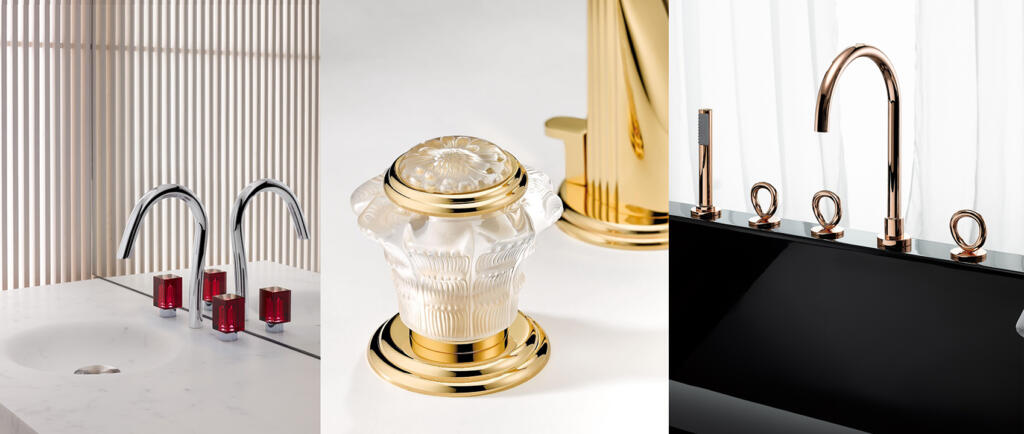
THG Paris
Although it’s the youngest in the bunch, THG Paris quickly captured the attention of the design world by taking bathroom fittings and accessories to unexpected new heights. Founded in 1956 by the trio of André Tétard, Julien Haudiquez and Alexandre Grisoni, THG prides itself on “exceptional pieces” that incorporate crystal, marble, porcelain, onyx, optical glass and semi-precious stones. Thanks in part to collaborations with buzz-worthy designers and iconic brands, the company’s collections are refreshingly diverse. Among the many shining examples, Beyond Crystal (designed by Rémi Tessier in collaboration with Baccarat), Dahlia (a Lalique collaboration based on a poetic design from 1931) and Nihal (designed by Xavier Cartron in collaboration with the French Limoges porcelain factory Haviland) are some of the most individualistic bathroom taps one could dream up. Likened to the “haute couture of bathroom fittings,” THG goes far beyond splashy taps to offer showers, basins, bidet mixers, tubs and whirlpools along with sleek kitchen fixtures. An environmentally conscious operation that handles every step of the manufacturing process (“from design and machining through to the foundry”), THG is also a member of the elite Entreprise du Patrimoine Vivant family.
